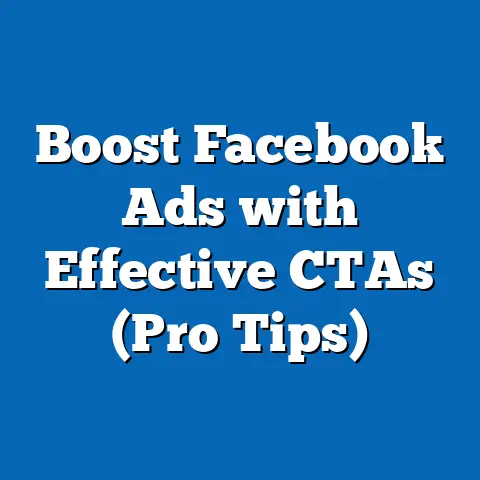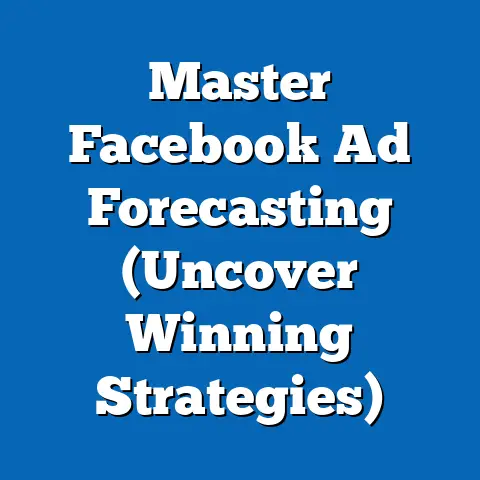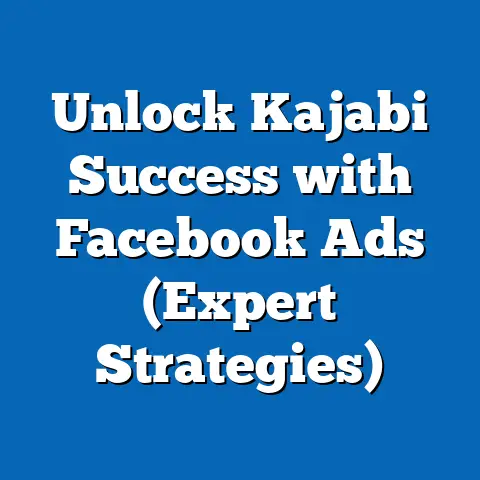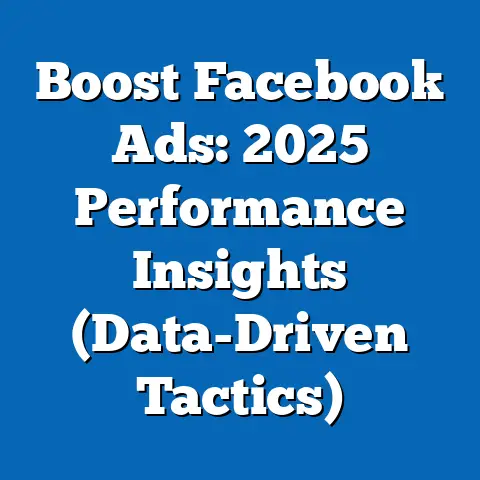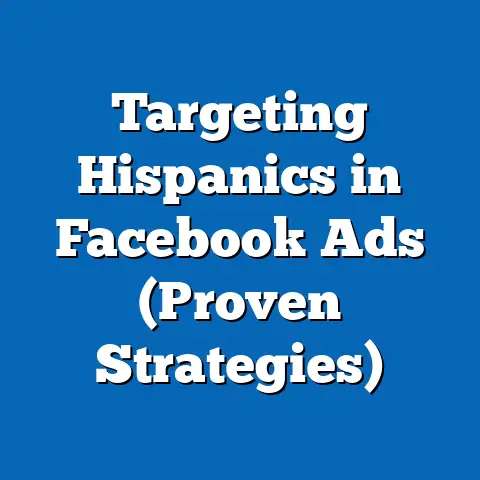Master Facebook Ad Character Limits (Essential Guide)
Have you ever poured hours into creating the perfect Facebook ad, only to be frustrated when it doesn’t fit within the character limits? You’re not alone. I’ve been there countless times, meticulously crafting what I thought was the perfect message, only to be met with that dreaded red error message. Many marketers struggle with the constraints of character limits on Facebook, often leading to confusion and wasted resources. It’s a common hurdle, but one that can be easily overcome with the right knowledge. This guide will demystify Facebook ad character limits, providing you with the essential knowledge to create compelling ads that comply with platform requirements. Think of this as your cheat sheet to unlocking more effective and less frustrating Facebook advertising!
Here’s a quick rundown of some common Facebook ad formats:
- Image Ads: These are your standard ads featuring a single image or graphic. They’re simple, effective, and great for showcasing products or services.
- Video Ads: Video ads are dynamic and engaging, allowing you to tell a story or demonstrate your product in action.
- Carousel Ads: Carousel ads let you display multiple images or videos in a single ad unit, each with its own headline, description, and link. They’re perfect for showcasing a range of products or highlighting different features.
- Slideshow Ads: Similar to video ads, slideshow ads combine multiple images into a visually appealing slideshow format. They’re a great alternative to video when you have limited resources.
Each of these formats has unique character limits for its components, such as headlines, descriptions, and primary text. For example, a carousel ad might allow for a longer description than a standard image ad. Understanding these differences is the first step to mastering the art of concise and compelling ad copy.
Takeaway: Familiarize yourself with the various Facebook ad formats and their unique character limits. This will save you time and frustration down the road.
Character Limits Breakdown
Now, let’s dive into the specifics. Here’s a detailed breakdown of character limits for each ad component, as of my last update. Keep in mind that Facebook occasionally updates these limits, so it’s always a good idea to double-check the current requirements in the Facebook Ads Manager.
- Primary Text: This is the main body of your ad copy, appearing above the image or video. It’s your chance to grab attention, tell a story, and highlight the key benefits of your offer. The recommended character limit is around 125 characters. While Facebook allows for longer text, shorter, punchier copy tends to perform better. In my experience, ads with primary text closer to this recommended length generally see higher engagement rates.
- Headline: The headline is the bold text that appears below the image or video. It’s designed to capture attention and entice users to click. The recommended character limit for the headline is 25 characters. This is a crucial element, as it’s often the first thing people see. Make it count!
- Description: The description is a short blurb that appears below the headline. It provides additional context and encourages users to take action. The recommended character limit for the description is 30 characters. Think of it as the cherry on top – a final nudge to convince users to click.
Here’s a handy table to summarize these character limits:
| Ad Component | Recommended Character Limit | Importance |
|---|---|---|
| Primary Text | 125 characters | Grabs attention, tells a story, highlights benefits |
| Headline | 25 characters | Captures attention, entices clicks |
| Description | 30 characters | Provides context, encourages action |
| Ad Component | Recommended Character Limit | Importance |
|---|---|---|
| Primary Text | 125 characters | Grabs attention, tells a story, highlights benefits |
| Headline | 25 characters | Captures attention, entices clicks |
| Description | 30 characters | Provides context, encourages action |
Takeaway: Know your limits! Keep these character limits in mind when crafting your ad copy to ensure your message is clear, concise, and compliant.
The Importance of Ad Copy Conciseness
Why are these character limits so important? It’s not just about adhering to Facebook’s rules; it’s about creating ads that resonate with your audience and drive results. In today’s fast-paced digital world, people have incredibly short attention spans. You have mere seconds to capture their interest and convince them to take action.
Concise ad copy is crucial for several reasons:
- Improved Readability: Shorter text is easier to read and digest, especially on mobile devices.
- Increased Engagement: Punchy, to-the-point copy grabs attention and encourages users to click.
- Better Mobile Experience: On smaller screens, long blocks of text can look cluttered and overwhelming.
- Higher Click-Through Rates: Compelling headlines and descriptions that fit within the character limits are more likely to drive clicks.
I’ve seen firsthand how trimming down ad copy can lead to significant improvements in ad performance. One time, I was working on a campaign for a local restaurant. The initial ad copy was lengthy and detailed, but the click-through rate was abysmal. After cutting the primary text by nearly half and crafting a shorter, more enticing headline, the click-through rate tripled!
According to a study by HubSpot, shorter headlines tend to perform better on social media. They found that headlines with 8-12 words receive 2x more clicks than longer headlines. While this data isn’t specific to Facebook ads, the principle still applies: conciseness is key.
Takeaway: Embrace conciseness. Shorter ad copy is often more effective at capturing attention, driving engagement, and improving click-through rates.
Tips for Crafting Effective Ad Copy Within Character Limits
Now that you understand the importance of character limits, let’s explore some actionable strategies for crafting persuasive ad copy that fits within these constraints.
- Start with a Strong Hook: Your opening line is crucial. It needs to grab attention and pique interest immediately. Use a question, a surprising statistic, or a bold statement to draw people in. For example, instead of saying “We offer the best coffee in town,” try “Tired of bitter coffee? We’ve got the perfect brew for you.”
- Use Clear and Compelling Language: Avoid jargon, clichés, and overly complex sentences. Use simple, direct language that resonates with your target audience. Focus on the benefits of your product or service, rather than just the features. Instead of saying “Our software has advanced reporting capabilities,” try “Get real-time insights to boost your sales with our easy-to-use reporting dashboard.”
- Focus on Benefits Rather Than Features: People care about what your product or service can do for them. Highlight the benefits and how it will solve their problems or improve their lives. For example, instead of saying “Our shoes are made with durable materials,” try “Enjoy all-day comfort and lasting quality with our handcrafted shoes.”
- Employ a Strong Call to Action: Tell people exactly what you want them to do. Use clear and concise calls to action like “Shop Now,” “Learn More,” “Sign Up Today,” or “Get a Free Quote.” Make sure your call to action is relevant to your offer and aligns with your overall campaign goals.
- Use Emojis Strategically: Emojis can add personality and visual appeal to your ad copy, but use them sparingly and strategically. Choose emojis that are relevant to your message and target audience. Avoid using too many emojis, as this can make your ad look cluttered and unprofessional.
I’ve found that testing different ad variations is crucial for optimizing performance. Try experimenting with different headlines, descriptions, and calls to action to see what resonates best with your audience. A/B testing is your best friend when it comes to finding the perfect combination of words and visuals.
Takeaway: Crafting effective ad copy within character limits requires creativity, strategy, and a deep understanding of your target audience. Use these tips to create compelling ads that capture attention and drive results.
Tools and Resources for Checking Character Limits
Don’t leave your ad copy to chance! There are plenty of tools and resources available to help you ensure you stay within the character limits.
- Character Count Tools: Online word processors like Google Docs and Microsoft Word have built-in character count features. There are also dedicated character counting websites that you can use to quickly check the length of your ad copy.
- Facebook’s Ad Manager: The Facebook Ads Manager has a built-in character counter that displays the number of characters you’ve used for each ad component. This is a convenient way to check your character count as you’re creating your ads.
- Preview Ads Before Launching: Always preview your ads before launching them to ensure they look good and comply with Facebook’s guidelines. The preview feature in the Ads Manager allows you to see how your ads will appear on different devices and placements.
I always recommend using multiple tools to double-check your character count. It’s better to be safe than sorry! I also find it helpful to write my ad copy in a separate document before pasting it into the Ads Manager. This allows me to easily edit and refine my copy without being distracted by the other elements of the ad creation process.
Takeaway: Utilize the tools and resources available to you to ensure your ad copy complies with Facebook’s character limits. Previewing your ads before launching them is also crucial for catching any errors or issues.
Common Mistakes to Avoid
Even experienced advertisers can fall victim to common mistakes when it comes to character limits. Here are a few pitfalls to avoid:
- Overloading Ads with Too Much Text: Resist the urge to cram too much information into your ad copy. Focus on the most important message and cut out any unnecessary words. Remember, less is often more.
- Ignoring the Visual Components of Ads: Your ad’s visual is just as important as the text. Make sure your image or video is eye-catching, relevant, and complements your ad copy. A strong visual can often convey more than words ever could.
- Failing to Test Different Ad Variations: Don’t assume that your first ad is going to be the most effective. Test different headlines, descriptions, and calls to action to see what resonates best with your audience. A/B testing is essential for optimizing your ad performance.
I’ve seen countless ads that are simply overloaded with text. They’re difficult to read, visually unappealing, and ultimately ineffective. Remember, your goal is to capture attention and drive action, not to overwhelm your audience with information.
Takeaway: Avoid these common mistakes to ensure your ads are clear, concise, and effective.
Real-World Examples of Successful Ads
Let’s take a look at some real-world examples of brands that have mastered character limits in their Facebook ads.
- Nike: Nike is known for its simple, powerful ad copy that focuses on inspiration and motivation. Their ads often feature a single image or video with a short, impactful headline and description. For example, one of their ads might feature a runner with the headline “Just Do It” and the description “Find Your Greatness.”
- Airbnb: Airbnb uses carousel ads to showcase a variety of unique accommodations around the world. Each image in the carousel features a short, enticing headline and description that highlights the unique features of the property. For example, one image might feature a cozy cabin with the headline “Escape to Nature” and the description “Unwind in this secluded mountain retreat.”
- Dollar Shave Club: Dollar Shave Club uses humor and wit to grab attention and promote their subscription service. Their ads often feature a video with a funny, memorable tagline and a clear call to action. For example, one of their ads might feature a man shaving with the tagline “Shave Time. Shave Money.” and the call to action “Join the Club.”
What makes these ads successful? They all adhere to the character restrictions while still delivering powerful messages. They focus on the key benefits of their products or services, use clear and compelling language, and employ strong calls to action. They also understand their target audience and tailor their messaging accordingly.
Takeaway: Study successful Facebook ads and analyze what makes them effective. Pay attention to how they use character limits to their advantage and craft compelling messages that resonate with their target audience.
Conclusion
Mastering Facebook ad character limits is essential for creating effective and engaging ads that drive results. It’s not just about following the rules; it’s about understanding how to communicate your message in a concise and compelling way. By understanding the different ad formats, knowing the character limits, crafting persuasive ad copy, utilizing available tools, and avoiding common mistakes, you can create Facebook ads that capture attention, drive engagement, and achieve your marketing goals.
Effective advertising on Facebook is a blend of creativity, strategy, and adherence to the platform’s guidelines. So, go forth, craft your compelling ads, and watch your results soar! Now that you’re armed with this knowledge, I encourage you to apply these strategies to your next Facebook ad campaign and see the difference for yourself. Remember, practice makes perfect, and every ad is an opportunity to learn and improve. Good luck!

